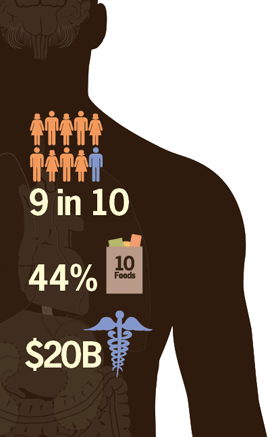I’ve been lobbied! Intense efforts to save pink slime aimed at governors, USDA officials, and me
I don’t think I’ve ever been the target of a concerted lobbying campaign before, but efforts to restore the public image of pink slime—a.k.a. Lean Finely Textured Beef—have even gotten to me.
This week, while I was working on my column on pink slime for the Sunday, April 1 San Francisco Chronicle, I received e-mail messages from:
- Dr. Michael Osterholm, the Minnesota-based food safety authority who I have never met but know about through his expertise and strong support for irradiation as a beef safety measure
- Bruce Smith, the Environmental Health and Safety officer of Beef Products, Inc (BPI), the company that makes pink slime
- Bruce Silverglade, the lawyer who now represents BPI but for many years was chief counsel for Center for Science in the Public Interest
All wanted me to know that pink slime was being treated unfairly because it is safe, nutritious and healthy, and getting rid of it will make ground beef more dangerous.
These efforts to educate me must be understood as a tiny fraction of the effort that is going into lobbying in favor of BPI and its product. Yesterday, the governors and lieutenant governors of five states toured BPI’s facilities and participated in a heated press conference, which also included the undersecretary of USDA for food safety.
This is breathtakingly high-level—and perhaps unprecedented—support for the public relations troubles of a private food company.
Helena Bottemiller of Food Safety News has a terrific report on these events. She quotes the remarks of Iowa Governor Terry Branstad:
We need to stand together to clear up the misinformation that has been circulating in the media…These accusations [against pink slime] are totally unfounded… I am proud to say that for 20 years I and my family have been eating it.
Here’s his instant classic: “Dude, it’s beef!”
The press conference also featured Nancy Donley, the founder and president of STOP Foodborne Illness, and mother of a child who died from eating a contaminated hamburger in 1993.
I had seen Ms. Donley’s letter about her son and the need for safe beef in a BPI advertisement in the Wall Street Journal on March 23. It contained one eye-popping statement:
BPI has generously supported STOP and has never asked for anything in return.
Really? I’d say BPI has gotten plenty of return on this particular investment.
STOP posts its tax statements online and these reveal a few small contributions from named private donors ($5000 to $10,000) but one of $250,000 from “a donor who wishes to remain anonymous.”
It doesn’t take much to deduce that this must be from Eldon Roth, the owner of BPI.
My comment to Food Safety News sums all this up:
Evidently, BPI has the political clout to pull in governors, USDA officials, and even food safety advocates on its behalf. I can’t help wondering whether their support for pink slime derives from a genuine belief that the public has treated BPI unfairly, or whether they are responding to the generous campaign contributions and charitable donations by BPI’s owner…I’m willing to grant that pink slime is safe, but that doesn’t make it acceptable [see note below].
Caroline Scott-Thomas writes in NutraIngredients that pink slime is “safe, nutritious—and icky” and that the food industry needs to take action “to avoid being at the mercy of the next consumer scare.” She suggests:
- Tell people what you’re selling them, no matter how unsavory it may seem.
- Spend more time preempting consumer concerns, rather than reacting to them.
- When industry does need to react, it should – quickly and with honesty.
- The idea of “pink slime” might be icky, but it has definite advantages, and we should have heard about them before.
Good advice. Watch for my comments on the pink slime situation in the San Francisco Chronicle on Sunday.
Note added, April 4: Michael Osterholm has no financial or other ties to BPI (see post of April 4).



